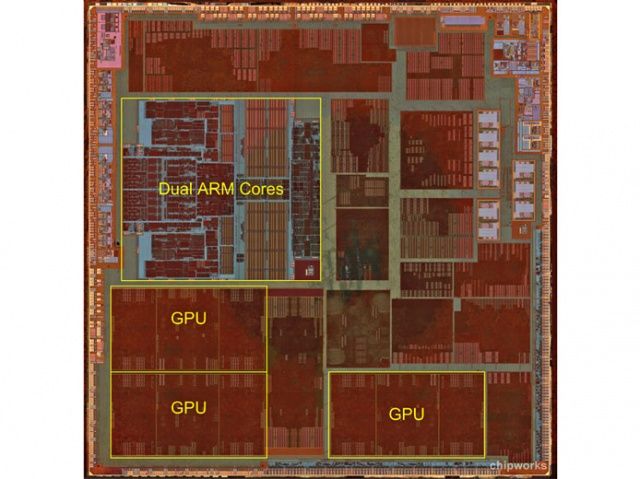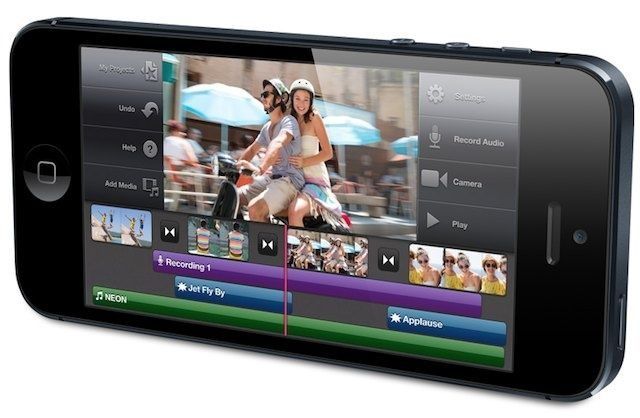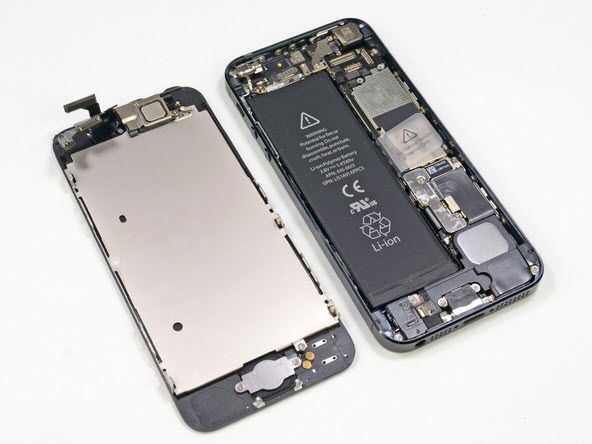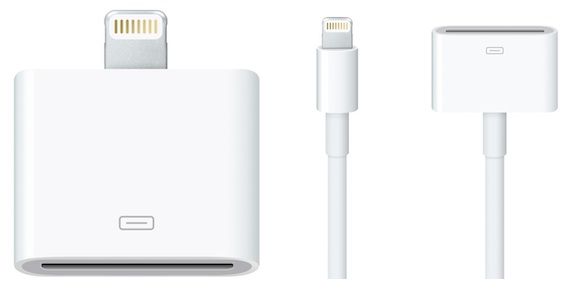The iPhone 5 is a cutting-edge device with a lot of impressive new technology, from Apple’s incredibly fast new A6 chip to impressive new in-cell touch display technology and a brand new Lightning dock connector. It’s a certainty that Apple will use some of this technology in the fourth-generation iPad, which is likely due in March of next year. Here’s what the iPhone 5 tells us about what the iPad 4 will be.
Processor
Here’s what we know about the A6 processor inside the iPhone 5. It’s blisteringly fast, the most powerful processor inside any mobile computing device. It was designed by hand — a costly and time-extensive process — to give it extra boosts in speed and energy efficiency. It’s built upon a 32 nanometer process that also adds to battery life. And Moore’s Law indicates that Apple won’t be able to substantially improve it for another two years.
Technically speaking, the A6 processor is a 1.2 GHz dual-core Custom Cortex-A15 class CPU with tri-core PowerVR SGX543MP3 graphics. Knowing this, and knowing what Apple has done in the past, we can make some educated guesses as to what the processor of the next iPad will be.
We think it’s likely Apple will use an A6X chip for the iPad 4.
In the past, Apple has almost always used the same processor for the iPad as it used for the current generation iPhone. The only difference has been clock speed. The A4 used in the iPhone 4 was 800MHz, compared to the 1GHz A4 used in the original iPad. In the iPad 2, the A5 also got a 200MHz speed bump compared to the A5 used in the iPhone 4S.
The only exception is the third-generation iPad, which boasted the A5X chip. The A5X was basically the same chip as the A5 chip, but with vastly ramped up quad-core graphics necessary to power the new iPad’s massive 2048 x 1536 display. It was a stop gap chip meant to bridge the A5 and the A6.
So here’s the question. Will the next iPad be a faster A6 chip, like with the first-gen iPad and iPad 2, or will it use an A6X chip?
We think it’s likely Apple will use an A6X chip for the iPad 4.
The issue is graphics. The iPhone 5 and third-gen iPad both use an SGX543MP3 graphics chipset, but the iPhone 5’s is tri-core, while the new iPad’s is quad-core.
Apple could simply use a quad-core configuration of the SGX543MP3 for the next iPad, but it seems unlikely that they wouldn’t boost graphics at all in a generation. We think that makes it likely that Apple will approach PowerVR, their go-to mobile graphics partner, and use either the SGX544 or SGX 554 chipsets in the next-generation iPad, requiring a tweaked A6X chip.
Display
The new iPad’s Display isn’t going to get taller like the iPhone 5’s display: Apple clearly feels that 4:3 works well for a tablet, and a 16:9 iPad would be awkward and needlessly fragment their tablet ecosystem.
Just because the iPad’s not going to get more pixels, though, doesn’t mean the display can’t improve. However, the new iPad actually has a better display when it comes to gamut, viewing angles, factory calibration and other criteria than the iPhone 5. There’s some small room for improvement, but not by much. Apple’s making the best mobile displays out there right now.
The thinnest, lightest iPad yet.
What can change, on the other hand, is how Apple makes its touchscreens. The new iPhone 5 uses in-cell touch technology to make the screen thinner. In the new iPad, the screen has three layers: LCD, touchscreen and protective glass. The iPhone 5, on the other hand, integrates the LCD and touchscreen into one component, resulting in a display that is much thinner.
A thinner in-cell touch display on the next iPad would result in a thinner profile overall. Especially if Apple coupled in-cell touch technology with Sharp’s new IGZO displays, Cupertino could vastly decrease the weight thickness of the next iPad: the Sharp IGZO display technology would eliminate the need for the new iPad’s massive battery, while the new in-cell touch display would shave precious millimeters off the form factor.
The result? The thinnest, lightest iPad yet.
Battery Life
There are a lot of ways in which Apple is going to be able to improve battery life next generation.
• A6X chip, like the A6 chip in the iPhone 5, should be built upon a 32nm process, which will result in improved battery life3.
• Sharp IGZO displays will improve battery efficiency of the power-hungry iPad display by making it easier for light to shine through the screen.
• The new in-cell touch displays will leave more room inside a thinner form-factor iPad for battery.
We’ve covered all of these in previous sections, but there’s one major change Apple can make in the new iPad to get more juice out of the battery: give it a 3.8V battery like the iPhone 5.
The third-gen iPad has a 11,560 mAh (!), 3.7V battery. The iPhone 5 has a 1,440 mAH, 3.8V battery. As far as milliampere-hours are concerned, the iPhone 5 more or less has the same size battery as the iPhone 4S, yet it still manages to get longer battery life despite the addition of a longer display (longer display = more pixels to power) and the notoriously power-hungry LTE. The secret is in the voltage, leading to a significant boost in watt hours.
What does this all mean? Well, the fourth-generation iPad should have vastly improved battery efficiency compared to the current model. Apple will be able to use a smaller, thinner battery and still improve battery life over the iPad 3. And it’ll take a lot less time to charge your iPad back to full than it was before.
Lightning
Finally, Lightning. What is there to say? It’s Apple’s new dock connector standard and it’s here to stay.
In theory, it should make it possible for future iPads to be much thinner than they could be before; however, it also means that accessories that plug into the iPad’s dock connector won’t work next year without an adapter, and that Apple will have to reissue Lightning-specific versions of the iPad Camera Connection Kit.
Either way, there’s no chance Apple won’t use the same Lightning connector in the iPad 4 as they used in the iPhone 5. Better get used to it.
![What The iPhone 5 Tells Us About The iPad 4 [Feature] The iPhone 5 is here. What does that mean for the next iPad?](https://www.cultofmac.com/wp-content/uploads/2012/09/DSC_0228.jpg)





